
Concept explainers
Draw the product formed when
a.
b.
(a)
Interpretation: The product formed by the treatment of
Concept introduction: Alkyl chlorides are obtained by the reaction of
Answer to Problem 9.27P
The product formed by the treatment of

Explanation of Solution
The given reagent is
Alkyl chlorides are obtained by the reaction of
Thus, the product formed by the treatment of

Figure 1
(a) The product formed by the treatment of
(b)
Interpretation: The product formed by the treatment of
Concept introduction: Alcohols are converted into alkyl tosylates by treatment with
Answer to Problem 9.27P
The product formed by the treatment of
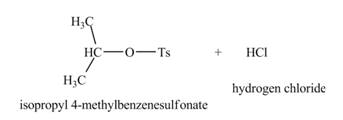
Explanation of Solution
The given reagent is
Alcohols are converted into alkyl tosylates by treatment with
Thus, the product formed by the treatment of

Figure 2
The product formed by the treatment of
(c)
Interpretation: The product formed by the treatment of
Concept introduction: Alcohols undergo dehydration reaction in the presence of strong acids like
Answer to Problem 9.27P
The product formed by the treatment of
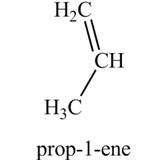
Explanation of Solution
The given reagent is
Alcohols undergo dehydration reaction in the presence of strong acids like
Thus, the product formed by the treatment of

Figure 3
The product formed by the treatment of
(d)
Interpretation: The product formed by the treatment of
Concept introduction: The reaction of alcohols with halogen acids
Answer to Problem 9.27P
The product formed by the treatment of
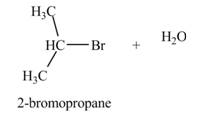
Explanation of Solution
The given reagent is
The reaction of alcohols with halogen acids
Thus, the product formed by the treatment of

Figure 4
The product formed by the treatment of
(e)
Interpretation: The product formed by the treatment of
Concept introduction: Alkyl bromides are obtained by the reaction of
Answer to Problem 9.27P
The product formed by the treatment of
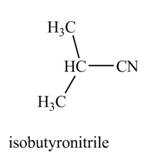
Explanation of Solution
The given reagents are
Alkyl bromides are obtained by the reaction of
Thus, the product formed by the treatment of
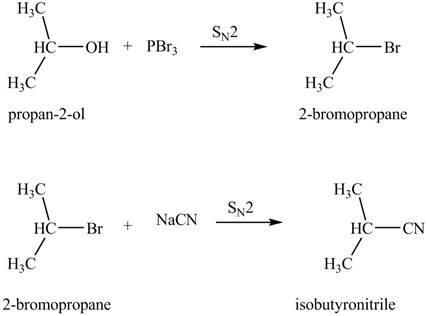
Figure 5
The product formed by the treatment of
(f)
Interpretation: The product formed by the treatment of
Concept introduction: Alcohols undergo dehydration reaction in the presence of
Answer to Problem 9.27P
The product formed by the treatment of

Explanation of Solution
The given reagent is
Alcohols undergo dehydration reaction in the presence of
Thus, the product formed by the treatment of
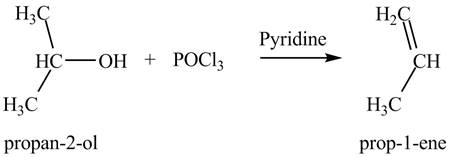
Figure 6
The product formed by the treatment of
Want to see more full solutions like this?
Chapter 9 Solutions
ORG.CHEMISTRY W/ACCESS+MODEL KIT PKG
Additional Science Textbook Solutions
Chemistry: Structure and Properties (2nd Edition)
EBK INTRODUCTION TO CHEMISTRY
Organic Chemistry
CHEMISTRY-TEXT
Living By Chemistry: First Edition Textbook
- (a) Give the IUPAC name for A and B. (b) Draw the product formed when A or B is treated with each reagent: [1] NaBH4, CH3OH; [2] CH3MgBr, then H2O; [3] Ph3P = CHOCH3; [4] CH3CH2CH2NH2, mild acid; [5] HOCH2CH2CH2OH, H+.arrow_forwardDraw the products formed when (CH3)2C=CH2 is treated with each reagent.a. HBrb. H2OH2SO4c. CH3CH2OH, H2SO4d. Cl2e. Br2, H2Of. NBS (aqueous DMSO)g. [1]BH3;[2]H2O2, HO-arrow_forwardDraw the products formed from nitration of each compoundarrow_forward
- Draw the product formed when (CH3)2CHOH is treated with following reagent. POCl3, pyridinearrow_forwardDraw the product formed when (CH3)2CHOH is treated with following reagent. TsCl, pyridinearrow_forwardDraw the products formed when phenol(C6H5OH) is treated with each reagent. Give an explanation. a. HNO3, H2SO4 h. product in (a), then Sn, HClarrow_forward
 Organic Chemistry: A Guided InquiryChemistryISBN:9780618974122Author:Andrei StraumanisPublisher:Cengage Learning
Organic Chemistry: A Guided InquiryChemistryISBN:9780618974122Author:Andrei StraumanisPublisher:Cengage Learning
